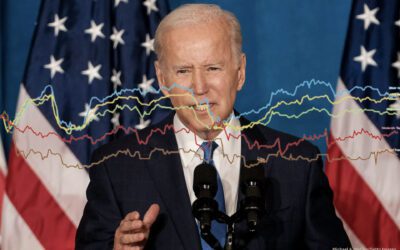Romney and Republicans hit ceiling from unfavorability
President Obama’s approval has improved to 47 percent, and he now leads Mitt Romney on the ballot by a 3-point margin, 49 percent to 46 percent—a net 3-point improvement since last month, according to the latest national survey by Greenberg Quinlan Rosner for Democracy Corps.[1] This is very close to the most recent NBC/Wall Street Journal poll — and suggests a tough but winnable race. Obama reaches 49 percent on his good days, but Romney has a ceiling of 46 percent on virtually every question in the survey: 45 percent, for example, trust him to handle the economy. And two percent are voting for third party candidates. Romney is dragged down not only by his own negative image but also by voters’ contempt for the Republican Party and the Republican Congress. The Democrats have settled into a 6-point advantage in party identification, double Obama’s vote margin.

Obama’s gains come partially from gains on whom voters trust to handle the economy. He was down 7 points to Romney in our last poll but is now dead-even. Mitt Romney has asked voters to contrast his business experience against Obama’s record on the economy. Voters are beginning to make that choice, and it has moved voters away from Romney. Still, the economy is fragile, as this poll shows no gains whatsoever on people’s personal economic experience, even as more re-enter the labor market. In the end, Obama would be satisfied to be at parity on the economy, given other advantages.
Obama’s gains have come disproportionately in the battleground states, again consistent with the recent NBC/Wall Street Journal and Quinnipiac polls. The shifts there may reflect the sharp attacks on Romney’s economic record and better than average economic performance in key states.
It is important to note that Obama’s gains have come entirely from the Rising American Electorate (youth, unmarried women, African Americans and Latinos) – the broad coalition of voters who supported him enthusiastically in 2008. These voters are beginning to come back. Obama has moved his vote up from 60 to 63 percent with the Rising American Electorate and Romney has slipped a like amount. The gains have come with African Americans (Obama’s vote is up from 88 to 95 percent) and unmarried women (up from 60 to 63 percent). African American gains are driving up the youth vote, but Romney has fallen off with whites under 30 years old. This vote is still well short of 2008, but Obama has improved his vote margin with young people by 15 points since the beginning of this year.
Obama has moved slightly ahead among independents (46 to 44 percent) after trailing slightly in previous polls — and he has consolidated his bloc more than Romney — with only 1 percent vulnerable in our Obama Voter Choice Scale.
This poll was conducted in the days prior to the Supreme Court’s decision to uphold the Affordable Care Act, though fittingly, voters now give the law its highest positive rating since our tracking began in the summer of 2010, led by women and young voters. Negative judgments are at 44 percent — down from earlier periods.
Finally, we wanted to highlight some of the partisan headwinds facing Romney and the Republicans:
Key Findings
- Democrats have now established a 6-point lead on party identification; only 31 percent of our respondents identified as Republicans. Taking into account party-leanings with independents, Democrats have a 7-point advantage.
- Romney’s 45 percent overall negative rating is in dangerous territory for a presidential nominee, and does not appear to be improving. More than half of independents give the Republican standard-bearer a negative rating. Comparatively, Obama’s positive ratings near the 50 percent mark and have shown remarkable stability for months.
- The Republican Congress, Congressional leaders, and the Tea Party are grievously unpopular and apparently stuck. John Boehner has a net 14-point negative rating, only one-third of voters approve of the Republican Congress’s job performance, and nearly 50 percent give the Tea Party a negative rating.
- The race for Congress is even, halfway back from 2010 when Democrats lost by 7 points.
[1] These findings based on a national survey of 1000 likely 2012 voters conducted June 23-27, 2012 by Greenberg Quinlan Rosner Research for Democracy Corps. Unless otherwise noted, margin of error= +/- 3.1 percentage points at 95% confidence.




